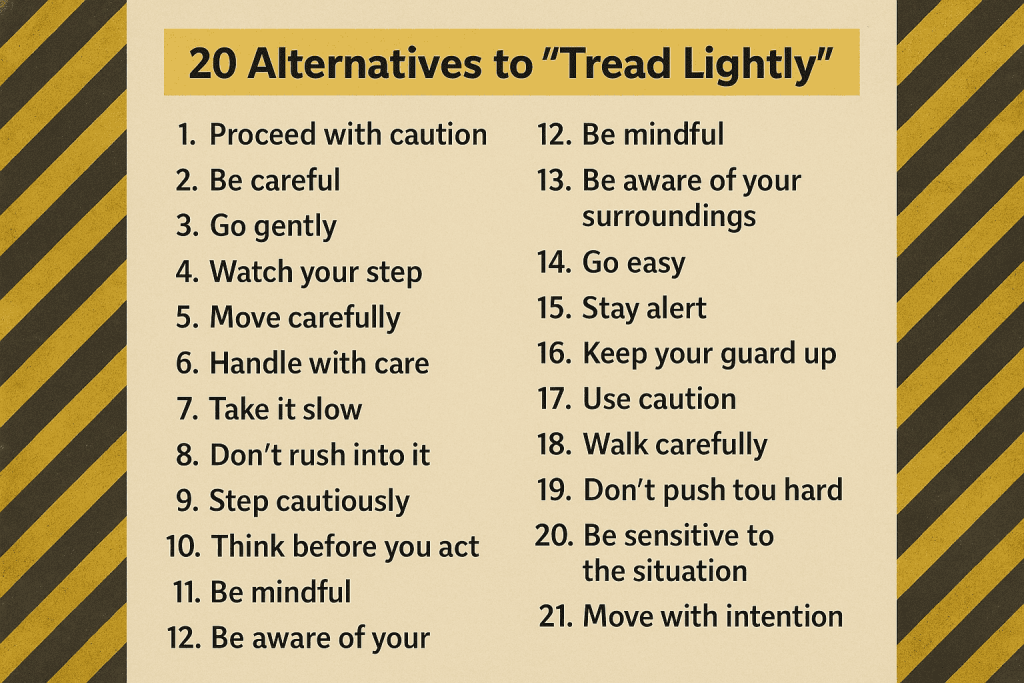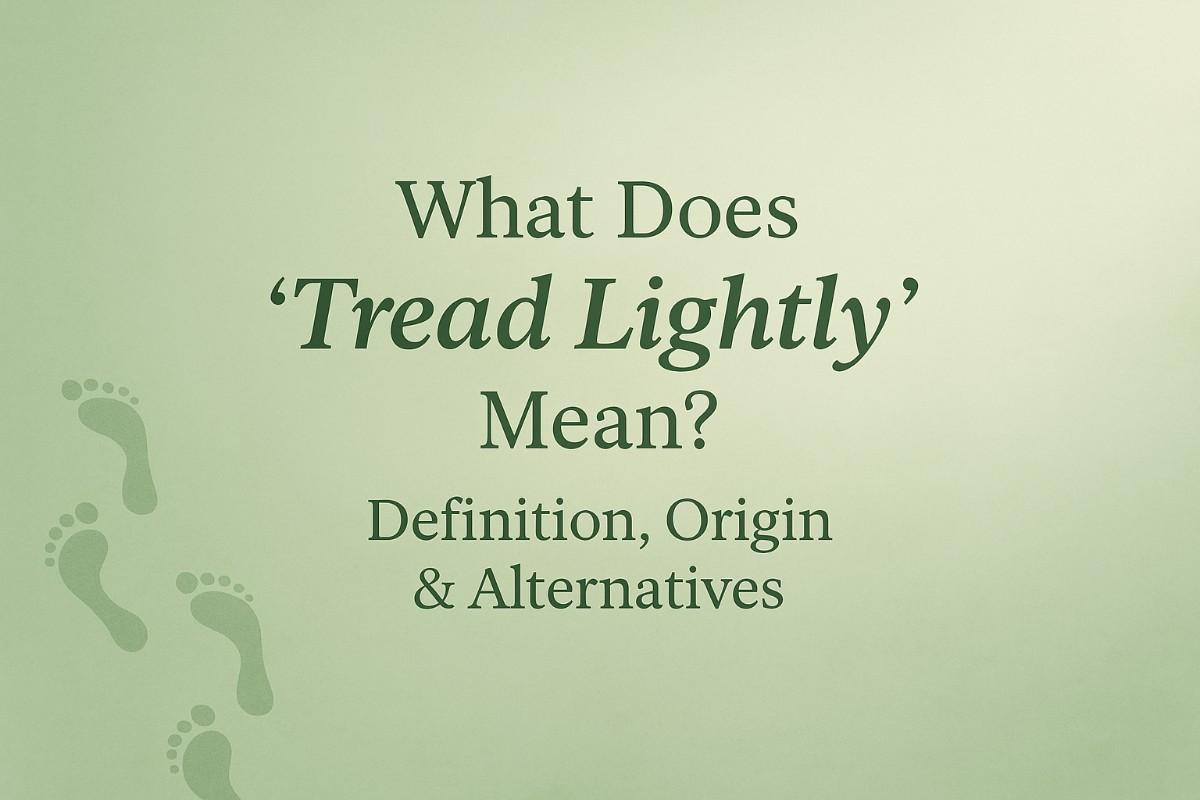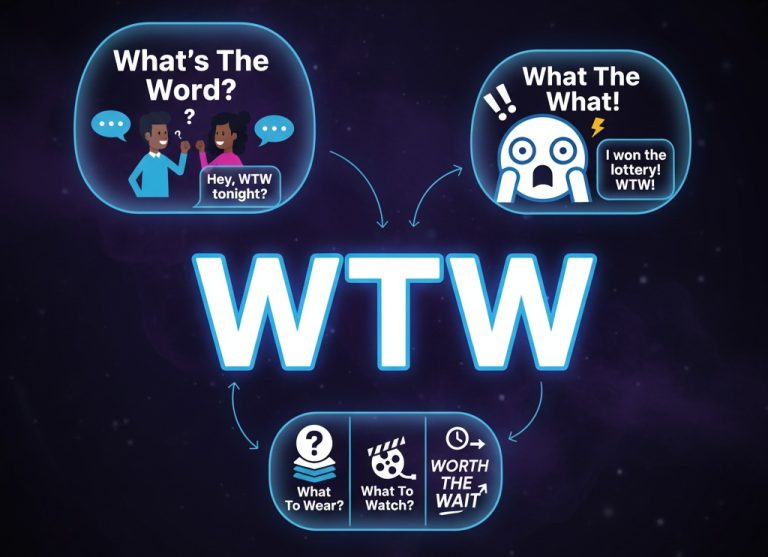What Does “Tread Lightly” Mean? Definition, Origin & Alternatives
You’ve probably heard someone say, “Tread lightly.” It sounds calm, but it carries weight. It’s one of those phrases that can mean more than it seems. Depending on the tone, it can be a gentle warning, a piece of advice, or a reminder to move with care.
This phrase appears in books, movies, and daily conversations. It’s simple yet powerful. People use it when they want someone to act carefully, think before speaking, or avoid trouble.
Let’s break down what “tread lightly” means, where it came from, and how to use it in everyday life without sounding too serious or dramatic.
What Does “Tread Lightly” Mean?
“Tread lightly” means to be careful or act with caution. The word “tread” means to step or walk. When combined with “lightly,” it suggests moving in a gentle or cautious way.
It’s not just about walking softly. It often means to handle a situation carefully — especially when things are sensitive or uncertain.
People use it in two main ways:
- Literal sense: To walk softly or move quietly. “Tread lightly in the garden so you don’t crush the flowers.”
- Figurative sense: To act with caution or be polite. “You should tread lightly when talking about that topic.”
In simple terms, “tread lightly” is a reminder to stay calm, think first, and avoid making problems worse.
The phrase can sound gentle, but sometimes it carries a subtle warning. For example:
“You’d better tread lightly around him today.”
Here, it means someone’s in a bad mood, so you should be careful what you say.
The Origin and History of the Phrase
The phrase “tread lightly” dates back hundreds of years. The word “tread” comes from Old English tredan, meaning “to step, walk, or go.” People have long used it in connection with careful movement.
But the figurative use — meaning “to act cautiously” — became common later, especially in English literature and speech. Writers often used it to describe how someone should behave in delicate situations.
One of the most famous uses comes from the poem To His Coy Mistress by Andrew Marvell (1650s). While he didn’t use the exact phrase “tread lightly,” many writers of that era used “tread” to describe emotional or moral care.
In modern culture, “tread lightly” gained new attention through television. The line became iconic when spoken by Walter White, the lead character in Breaking Bad. In a tense scene, he says, “Tread lightly.” It’s short, sharp, and a warning. Fans remember it as one of the show’s most chilling quotes.
Since then, the phrase has appeared in pop culture, business settings, and even environmental campaigns. For example, nature organizations use “tread lightly” to remind people to protect the environment — to walk softly and leave no damage.
So, this small phrase has traveled from old English roots to modern pop culture and environmental awareness. It’s short but full of meaning.
When & Where to Use “Tread Lightly”
You can use “tread lightly” in both serious and casual ways. The key is understanding the tone. It’s useful when you want to tell someone to be careful — but politely.
Here are some common situations and examples:
1. When giving advice:
“That’s a touchy subject, so tread lightly.”
Meaning: Be sensitive with your words or actions.
2. When warning someone:
“You should tread lightly around the manager today.”
Meaning: Someone’s upset, and you don’t want to make things worse.
3. When talking about environmental care:
“We must tread lightly on this planet.”
Meaning: Respect nature and avoid harming the environment.
4. In professional settings:
“When discussing pay raises, tread lightly.”
Meaning: Handle the conversation tactfully.
5. In relationships or friendships:
“She’s still upset, so tread lightly when you bring it up.”
Meaning: Be gentle and understanding.
Tone and context matter
“Tread lightly” can sound polite, cautious, or even threatening — depending on delivery.
- Polite tone: “Let’s tread lightly here” — calm advice.
- Serious tone: “I’d tread lightly if I were you” — a subtle warning.
Avoid using it in formal writing like reports or essays. It works best in speech, creative writing, or conversational content.

Find Out More: Third Wheel — Meaning, Usage, and Professional Alternatives
Alternatives to “Tread Lightly”
Here are some alternative phrases you can use depending on tone and context.
1. “Be careful”
Meaning: Use caution in what you do or say.
Explanation: A simple, direct replacement that fits almost anywhere.
Example: “Be careful when bringing up that subject.”
Best Use: Everyday speech or advice to friends.
2. “Watch your step”
Meaning: Move carefully or behave wisely.
Explanation: Can be literal or figurative. It often implies a warning.
Example: “Watch your step — this situation’s tricky.”
Best Use: Informal speech or when warning someone of trouble.
3. “Go easy”
Meaning: Take it slow or handle gently.
Explanation: It’s casual and softer in tone than “tread lightly.”
Example: “Go easy when you talk to him. He’s had a bad day.”
Best Use: Friendly advice or emotional situations.
4. “Proceed with caution”
Meaning: Move forward but be aware of risks.
Explanation: Often used in professional or serious contexts.
Example: “We should proceed with caution until we have more data.”
Best Use: Work meetings, formal discussions, or risk-related topics.
5. “Mind your words”
Meaning: Be careful what you say.
Explanation: Focuses on communication and tone.
Example: “Mind your words around her — she’s sensitive about that.”
Best Use: Personal conversations or guidance.
6. “Take it slow”
Meaning: Don’t rush.
Explanation: Encourages patience and care.
Example: “It’s a new job — take it slow and learn the ropes.”
Best Use: When advising patience or gentle progress.
7. “Handle with care”
Meaning: Treat something delicately.
Explanation: Used both literally and metaphorically.
Example: “This topic’s sensitive — handle with care.”
Best Use: Conversations, projects, or emotional subjects.
8. “Be mindful”
Meaning: Stay aware of your actions and their effects.
Explanation: It’s polite, calm, and often used in professional or personal development settings.
Example: “Be mindful of your tone in that meeting.”
Best Use: Business, relationships, or self-improvement topics.
Simple and Polite Responses to “Tread Lightly”
If someone tells you to “tread lightly,” how you respond depends on the tone and situation.
Here are polite and friendly ways to reply:
Calm and respectful replies:
- “Thanks, I’ll be careful.”
- “Good advice — I’ll keep that in mind.”
- “Understood.”
Playful or lighthearted responses:
- “Always do!”
- “Don’t worry, I’ll step softly.”
- “Treading lightly is my specialty.”
If the tone feels like a warning:
- “Got it. I’ll stay cautious.”
- “No worries, I’ll handle it carefully.”
The key is to stay calm and polite. You don’t want to sound defensive. The phrase usually comes from someone who’s trying to help — or warn you in a gentle way.
If someone says it jokingly, match their humor. If it’s serious, keep your response short and respectful.
Conclusion
“Tread lightly” may sound simple, but it carries depth. It’s not just about walking softly — it’s about acting with awareness. Whether you’re dealing with people, situations, or nature, the phrase reminds you to move with care.
It’s one of those sayings that fits almost anywhere in life. From workplace conversations to personal relationships, it signals thoughtfulness and respect.
The next time someone says, “Tread lightly,” take it as a friendly nudge. It means slow down, think, and choose your steps wisely.
Sometimes, a little care makes all the difference — in words, actions, and how we move through the world.

A former editor and grammar geek, David Langford has spent years refining the art of clear communication. He combines his journalism background with a knack for teaching, offering straightforward tips to master tricky grammar rules. When he’s not proofreading, he’s probably debating Oxford commas.




